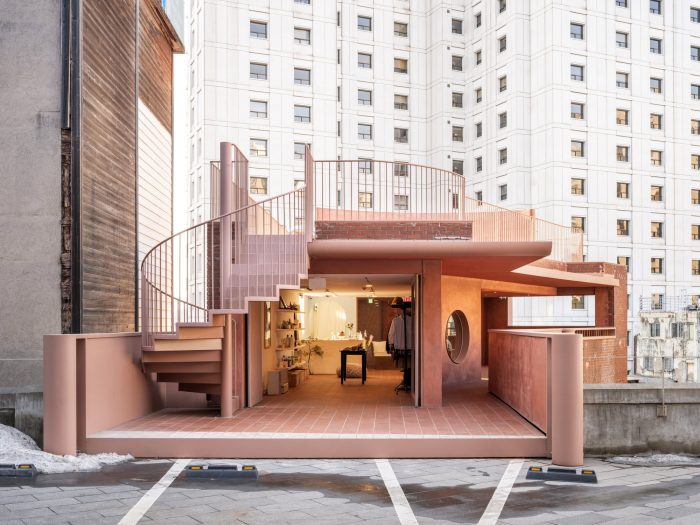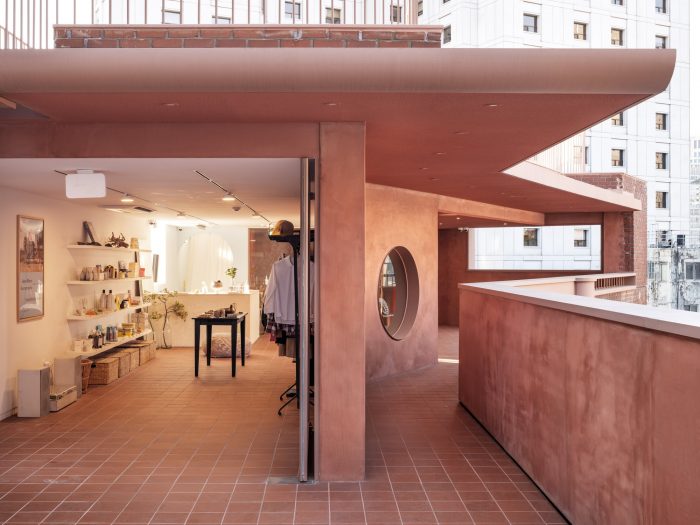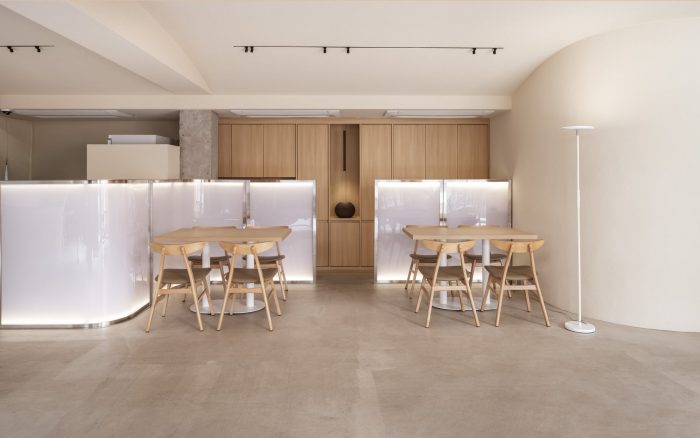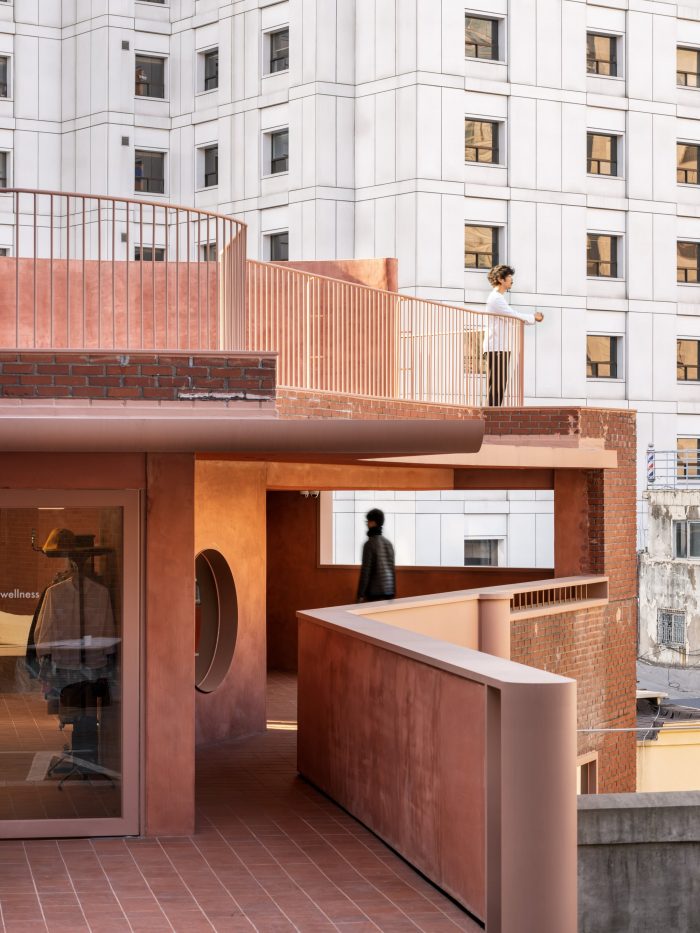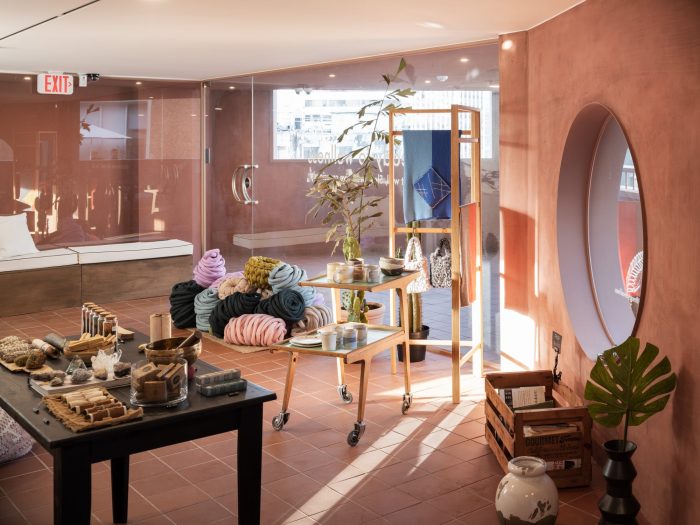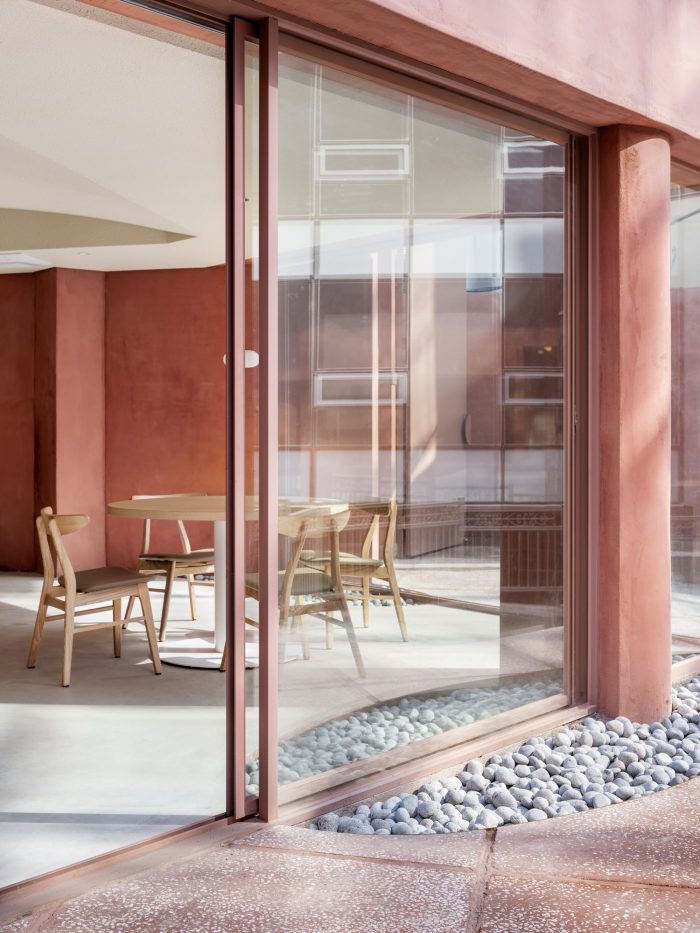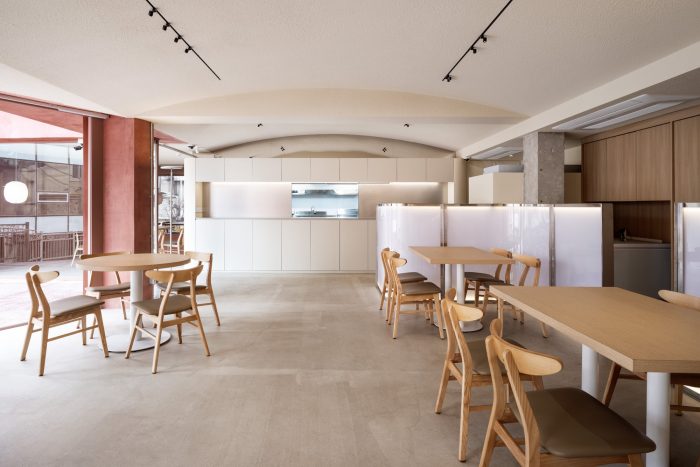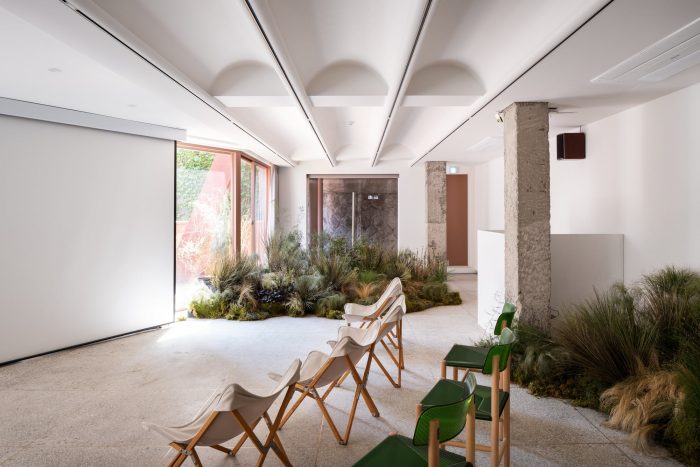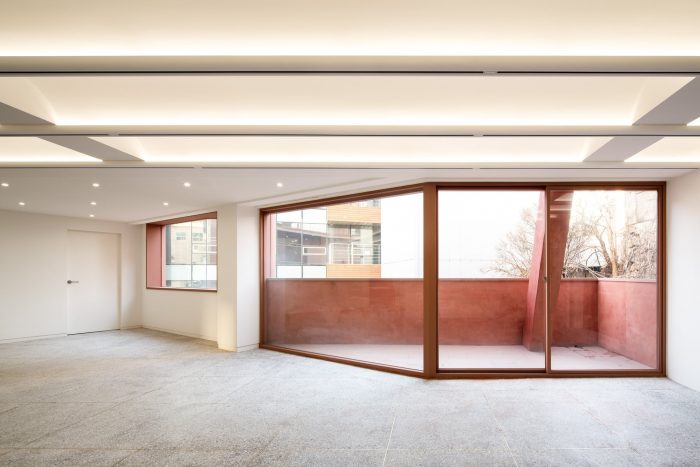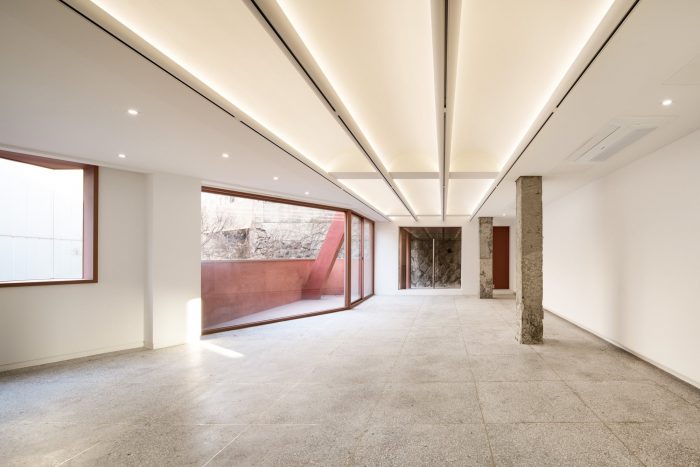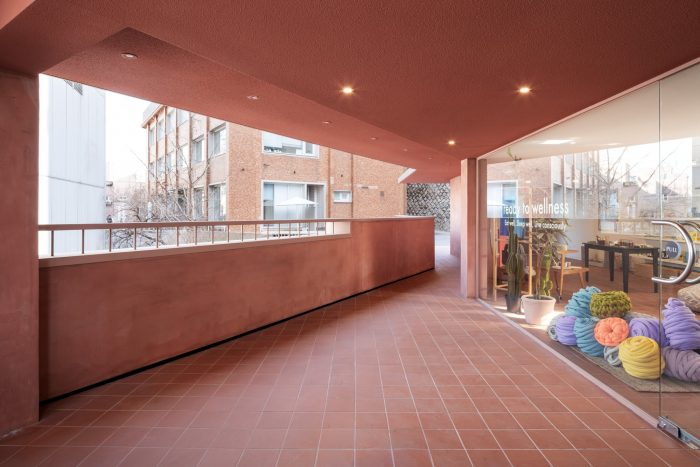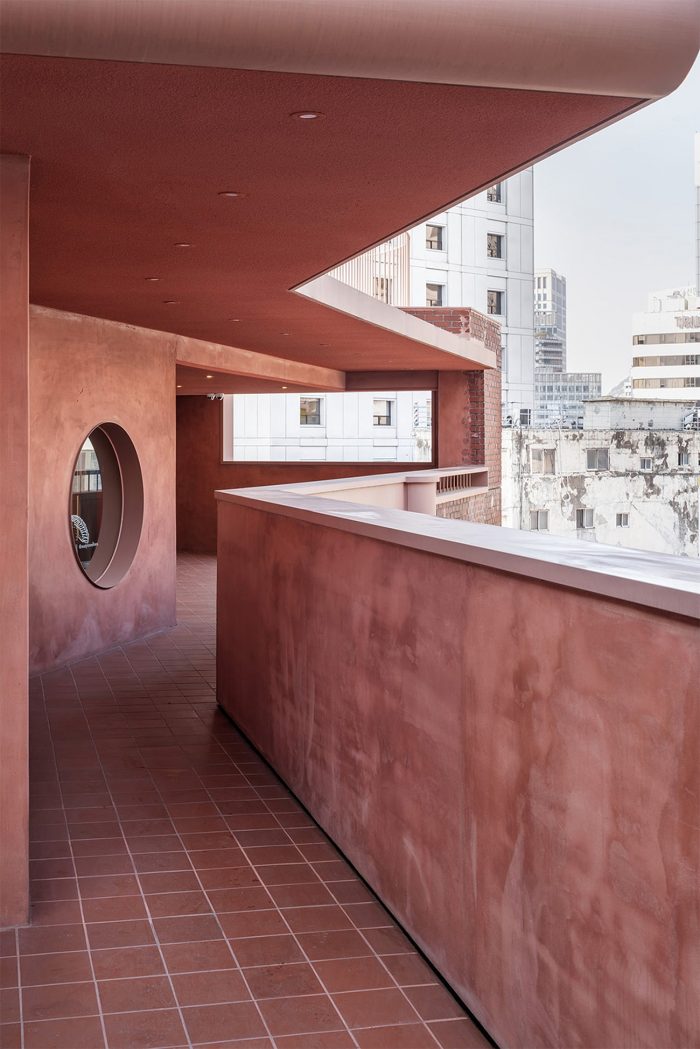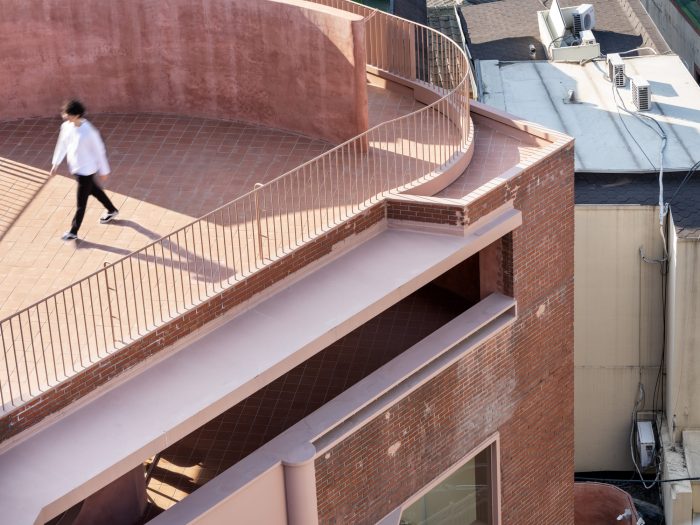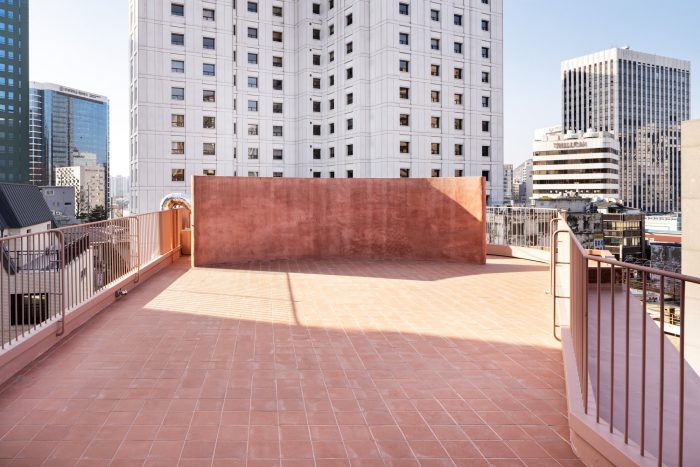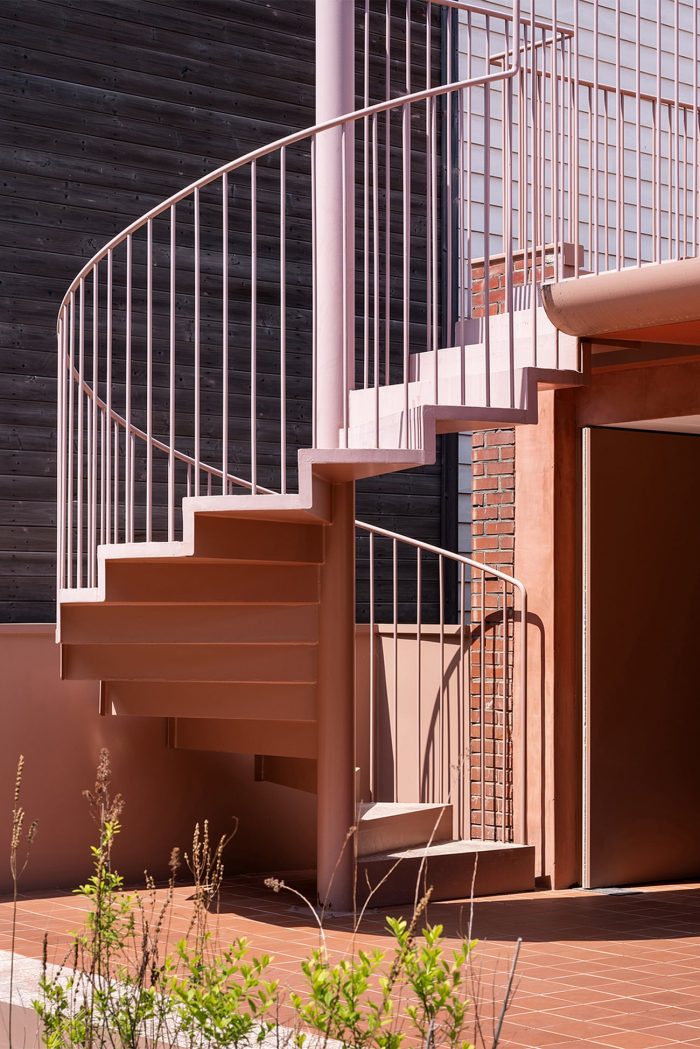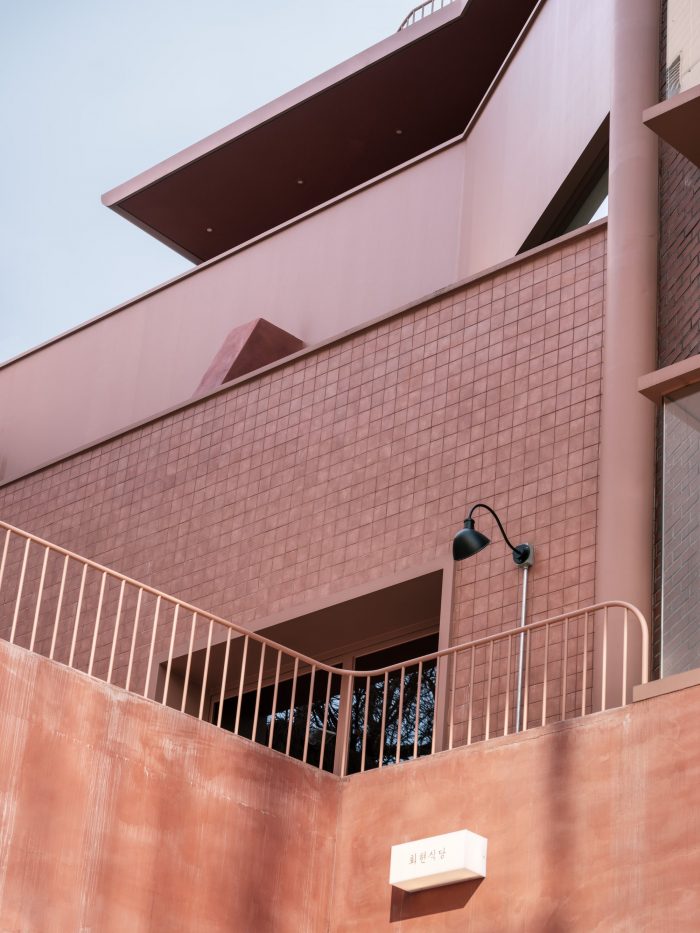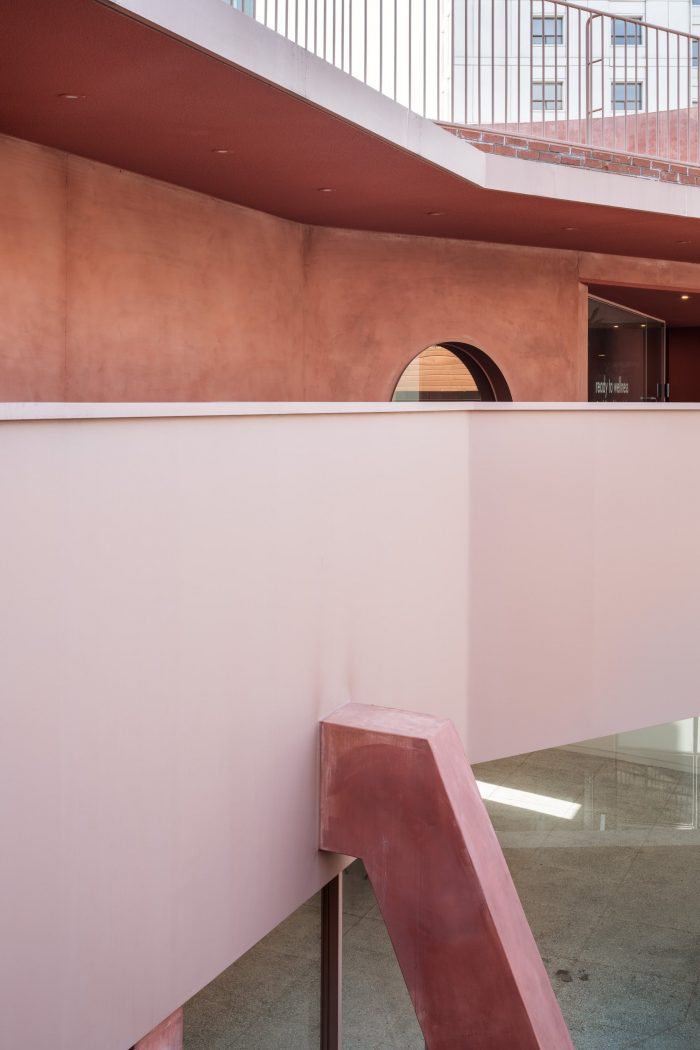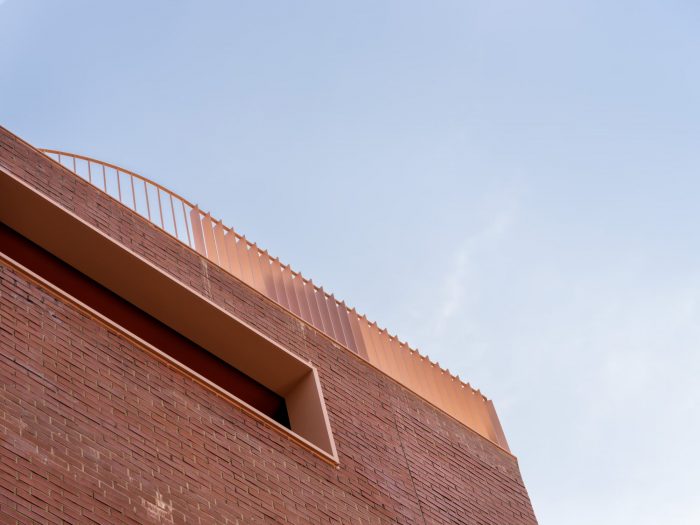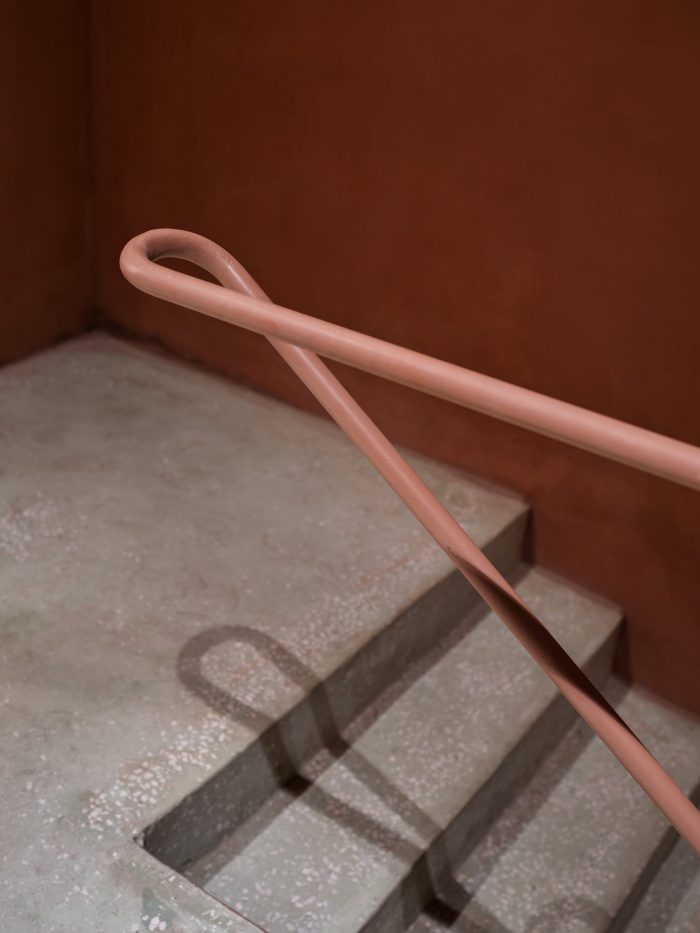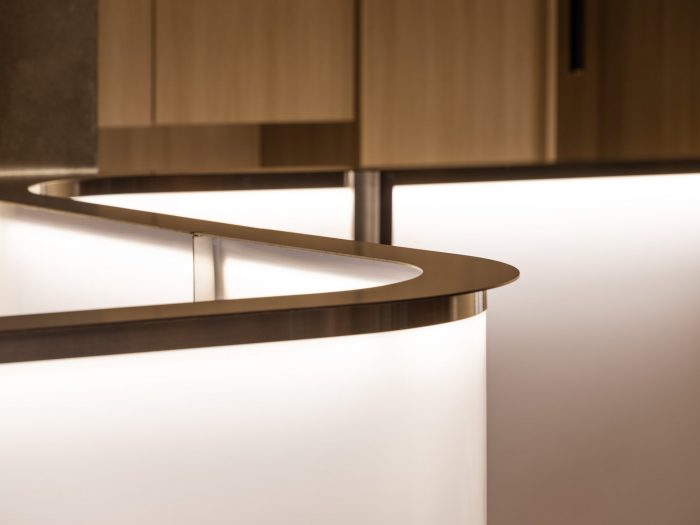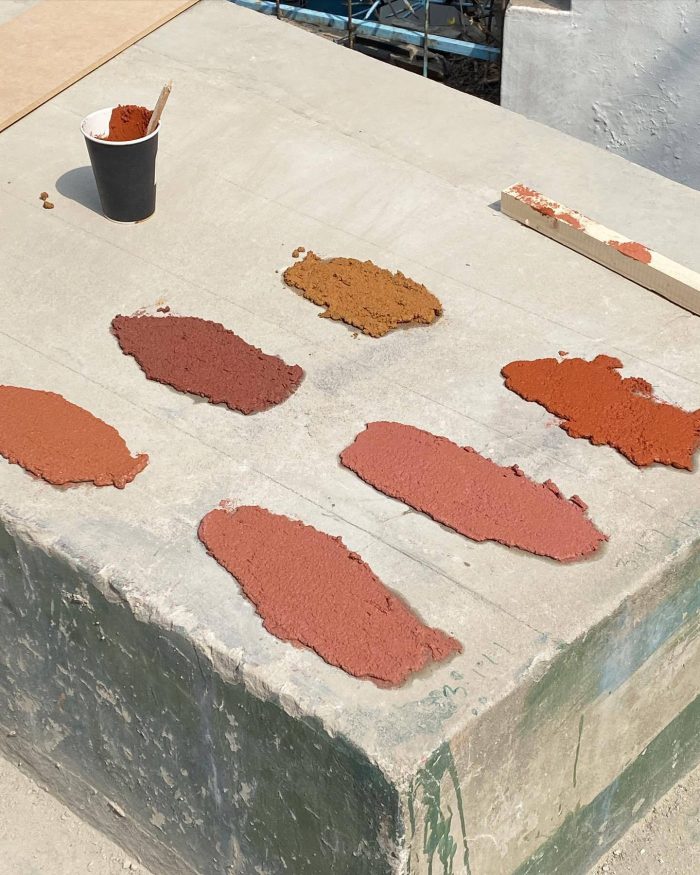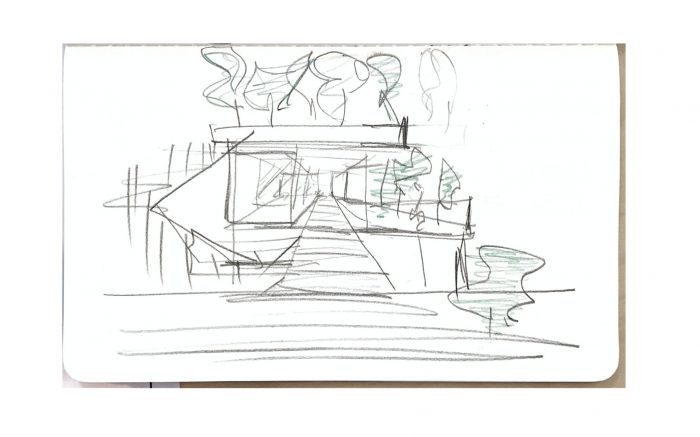多文化空间的改造 – 我们改造了位于首尔南山脚下的Goshiwon(合租房),它是在20世纪90年代用红砖建成的。这个地方可以保持过去的样子,但我们把它升级改造成一个与电影院、咖啡馆、餐厅和设计商店共存的复杂的文化场所。建筑师在记录现有建筑的时间传承的同时,努力打造一个可以吸收近期和未来可能性的文化空间。
Renovation of A multi-cultural space – We renovated Goshiwon(share house) which was built with red bricks in the 1990s located in the foot of the Seoul Namsan Mountain. The place could remain as just the old past, but we upcycled the place into a complex cultural place coexisting with a cinema room, café, restaurant, and design shops. The architecture put efforts into making the cultural space that can be absorbed with the recent and the futural possibility as he recorded the time inheritance of the existing building.
翻新的层次–这栋建筑曾被用作密集型房间的Goshiwon。当旧屋顶和墙壁消失后,我们可以看到每一个楼层的平面。
Layers of Renovation -This building was used as Goshiwon with dense rooms. When the old roof and the walls disappear, we could see every single one of the planes of the floors.
一楼部分被掩埋,二楼走上外侧的楼梯,三楼面对挡土墙,四楼与下一块土地的地面相接,还有一个视野开阔的天台。每层楼不仅保持了和谐的建筑身份,而且还将设施聚集在核心区(阶梯房),很好地发挥了建筑的基本功能。
A partially buried first floor, a second floor going up the outer stairs, a third floor facing the retaining wall, a fourth-floor meeting the ground level of the next land, and a rooftop with an open view. Each floor not only maintained the identity of a building in harmony but also gathered the facilities in the core (step room) to perform the basic functions of the building well.
在Piknic内部,它由一楼的Hoehyeon餐厅、二楼的咖啡馆、三楼的野餐子艺术空间、四楼的编辑店和五楼的天台组成。这座建筑的通道只与一个楼梯入口相连,每层的无障碍通道是一个挑战。一楼的餐厅,由入口处的大窗户组成,其内部地板延伸到外面,欢迎人们的到来。这增加了通过一条狭窄小巷的入口的可及性。此外,一楼的主楼梯间的入口被扩大了视觉,与二楼相连的外楼梯间的入口也被创造出来,以加强建筑楼梯间以外的两层空间的无障碍性。
Inside the Piknic, it consists of a Hoehyeon restaurant on the first floor, a cafe on the second floor, a picnic sub-art space on the third floor, an editing shop on the fourth floor, and a rooftop on the fifth floor. The passage of this building was connected to only one stairway entrance, and the accessibility to each floor was a challenge. The first-floor restaurant, which consists of large windows at the entrance, welcomes people with its interior floor extended to the outside. This increased the accessibility of the entrance through a narrow alley. In addition, the entrance of the main stairwell on the first floor was expanded visual, and the entrance of the outer stairwell connected to the second floor was created to enhance the accessibility of the two-story space other than the stairwell of the building.
本来,建筑中的颜色是一种媒介,给人以直接和强烈的印象,并作为一种记忆和识别的标记。接过建筑中令人印象深刻的红色身份,它使用新潮、多样的材料和装饰,为每一层楼涂上现代的新红色。这样一来,原有红砖的经典感觉和新的红色的和谐就凸显出来。
Red brick – The original building color is red with red bricks colored over the years. Originally, Colour in architecture is a medium that gives people an immediate and intense impression and serves as a memorized and identifiable marker. Taking over the impressive red identity of the building, it uses trendy, diverse materials and finishes to coat each floor with the new red color of the modern era. In this way, the classic feeling of the original red brick and the harmony of the new red color stand out.
Architects: Indiesalon
Year : 2020
Photographs :Donggyu Kim
Lead Architect : Seokjoon Jang
Design Team : Kyubeen Lee, Yukyung Park
Construction : Yongmin Lee
City : Jung-gu
Country : South Korea


